Get Enchanted! Chapter Three: Musical minstrels Alan Menken and Danny Troob!
by Jeremie | March 18, 2008 7:10 am
Jeremie Noyer speaks to two legendary Disney names that will be familiar to fans of the Studio’s recent animated output: multiple Academy Award-winning composer Alan Menken, and musical orchestrator Danny Troob!
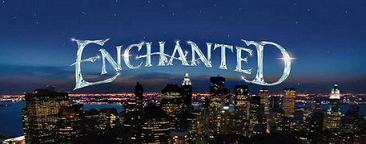
Alan Menken: Composing An Enchanted Score
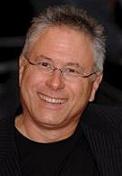 Every Disney heroine has her own minstrel to sing her story or compose songs for her. Aurora has hers, Maid Marian has Alan-a-Dale, Eilonwy has Flewddur Fflam, Ariel has Sebastian, Esmeralda has Clopin. And Giselle has no less than Alan Menken!
Every Disney heroine has her own minstrel to sing her story or compose songs for her. Aurora has hers, Maid Marian has Alan-a-Dale, Eilonwy has Flewddur Fflam, Ariel has Sebastian, Esmeralda has Clopin. And Giselle has no less than Alan Menken!
A fairytale in itself, his story couldn’t but have lead him anywhere else but than to compose the songs and the score for Enchanted: having so well revealed the inner beauty of a Little Shop Of Horrors, he was invited by a famous Californian mouse to dive with him Under The Sea. His songs were so “Belle” that the mouse opened his Cave Of Wonders for a decade of happiness during which the Colors Of The Wind led him to The Bells Of Notre Dame. And that’s how A Star is Born!
With Enchanted, it’s not only Alan Menken reuniting with Disney, it’s like Disney was reuniting with Disney. Enchanté, Monsieur Menken!
 Animated Views: Enchanted does not just tell Giselle’s story. It seems to tell Disney’s musical history. Indeed, the style of the songs kind of evolve chronologically along the movie, from Snow White style to present-day ballad. How’s that?
Animated Views: Enchanted does not just tell Giselle’s story. It seems to tell Disney’s musical history. Indeed, the style of the songs kind of evolve chronologically along the movie, from Snow White style to present-day ballad. How’s that?
Alan Menken: First of all, I knew that we wanted to have Andalasia to be that animated kingdom and for a long time, they were talking about it being actually a parody of what Howard Ashman and I did. And I thought: “You know, I’m not really comfortable and happy doing that. I’d rather go further back to the world of Snow White and Cinderella.” There is such a rich material to draw on there, like the opening with the book and the big Disney chorus. So, we started with “When you meet the someone who was meant for you”: that’s very much like Snow White. That was just so much fun for me to do. And then, when we bring them into this world, we really have an extra amount of contrast when she meets modern-day Time Square. In fact, the songs kind of grow up with the characters. As the characters become sort of three dimensional, songs become more contemporary. So, I think of Happy Working Song as being akin stylistically to like Belle or Something There from Beauty and the Beast. I think of That’s How You Know as being a kind of an urban song, but when the counterpoint section and everybody is joining in with Giselle, it’s a like a big Disney production number, but it’s really set in a much more contemporary place, kind of pop theater. Then, So Close is really in my ballad style, and the most modern song is Ever, Ever After which is the single.
AV: In order to create that musical journey, did you do some research in matter of Disney musical history, just as you did when you composed your first Disney score for Little Mermaid?
AM: Yes. I wanted to make sure that my pre-conception, musically, about the era of the music, would also coincide with what Kevin Lima felt and what Stephen Schwartz felt. I wanted to make sure that we were all in synch about what we were doing. You know, that whole thing with the book opening, that’s straight out of those early films. So, I did go back and listen to them again and we each pointed to all: “oh, I love that! Oh, I love that…” I wanted to make sure that I really hit the point that we all felt most strongly expressed that era.
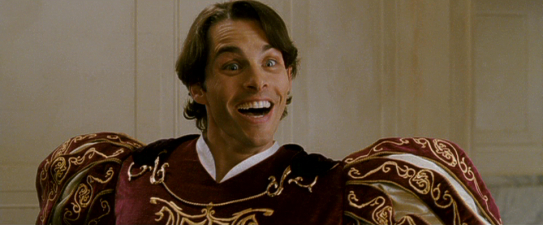
AV: How did you treat the story when the characters are in New York?
AM: It’s a combination of two styles because it’s “Giselle” in “New York”. So, it’s really going back and forth between Andalasia and fairy tale and a much more cynical modern view of New York. That was the balance I had to find : going between those two styles. In That’s How You Know, I was using a Latin feel or kind of a salsa feel and reggae, and blending that with a rock feel. You know, that’s kind of a whole melting-pot that is New York.
AV: This combination of two worlds can also be felt through your appealing to two different orchestrators.
AM: Yes, there are Danny Troob and Kevin Kliesch. The animated world was orchestrated by Danny, and the live-action world was orchestrated by Kevin, with Danny taking some of the most animation-influenced cues. It was a great pleasure to work with Kevin Kliesch. He’s a brilliant orchestrator. It was my first time working with him and I thoroughly enjoyed it. And of course Danny Troob as always did a brilliant work.
AV: What kind of an orchestra did you use for the score?
AM: For the most part of it, he had an 82-piece orchestra that we recorded in Los Angeles. And we also had a couple of small orchestras. We did it at Todd-AO Studios.
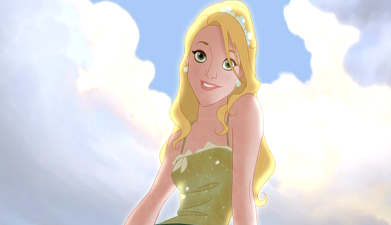
AV: For So Close, how did you come to the idea of appealing to an outer voice and not to a character’s as it was for the previous songs?
AM: That was really a montage moment, like Beauty and the Beast. But because of the reality of the film, we though we’d better have somebody sing it right in that ball. Kevin really felt he wanted the reality of it being sung there. I think it was a nice touch.
AV: How did you decide where the songs should go within the storyline?
AM: Stephen Schwartz and I were completely involved in the choice of where every song went. We chose many other song moments that we tried out. Some of them didn’t work but these were the ones that we all were able to agree on.
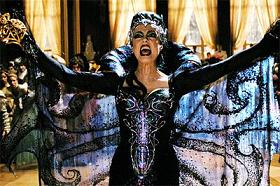 AV: One important aspect of classic Disney films is that they have great villains. But here, the villain doesn’t sing. How did you approach Narissa musically?
AV: One important aspect of classic Disney films is that they have great villains. But here, the villain doesn’t sing. How did you approach Narissa musically?
AM: She has a definite signature theme and she has a definite choral signature under her. Stephen Schwartz wrote words, which are kind of nonsense words that come under Narissa in a number of places to become prevalent at the end of the movie in a kind of a Carmina Burana kind of way.
AV: The film is also about parody. What was your position, musically, regarding that aspect?
AM: Musically, I wanted to be as true and sincere to what Snow White‘s songs might have been or Sleeping Beauty‘s or Cinderella‘s songs might have been. I just wanted to hit some of the prototypical notes, if you will, that would remind people of that era, so they would associate Giselle with, you know, that wide-eyed innocent time that will be so contrasting with coming into the modern. It was most important to me that there really be emotional content. We didn’t want to laugh at these characters. We wanted to simply smile at the recognition of these characters.
AV: You’re well-known for your songs and scores for Disney animated classics, but also for your score for live-action movies. You seemed the perfect composer for Enchanted.
AM: I had to go back and forth to a degree between my animated head and my live-action head and really kind of blend between the two very consciously. That was a big part of my collaboration with Kevin Lima, our director.
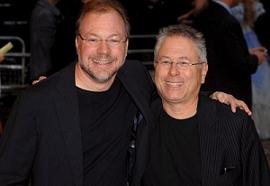
AV: How did you work with him?
AM: I would send him demos of the score and sometimes I sent cues over and over again, following the feedback I would get from him: “It’s too busy… Do it less busy… Less thematic…can you head the theme here?… Why do you use that theme there?” He was very, very literal. So there was really barely a note of this score that hasn’t been scrutinized. It’s quite extraordinary.
AV: At what stage of the production did you come aboard ?
AM: Well, I was involved in an earlier development, an earlier incarnation of the project. But once Kevin Lima and Chris Chase were asked onto the project, I wasn’t on it anymore at that time. Then, Kevin had the freedom to appeal to anyone. I was hoping he would come to me, but there was no guarantee that he would. He had every right and responsibility to consider all kinds of alternatives. So, he decided that I would be the right person to come to and he specifically asked that we reunite with Stephen Schwartz on this, which was my pleasure. But really, once they reached the reality of this production, it belonged to Kevin and Chris and then they invited me back on.
AV: And how did you record the songs. Just as you usually do it, like for a Broadway cast recording?
strong>AM: No. They were done in many different phases. You know, we did early tracks, I would say over a year before the scoring dates. We’ve got the vocals done at that time, on the first three numbers, True Love’s Kiss, Happy Working Song and That’s How You Know. On So Close, I did the early demos but the track was created and produced by Robbie Buchanan, and his artist Jon McLaughlin sang it. It passed through many hands until it came back to Robbie and then back to me, then we orchestrated over Robbie’s track and then created that middle section when they dance. So much of this movie was, you know, creating something and then pulling it apart, and using part and then creating a new part of it. It’s amazing it came out as well as it did!

AV: This movie seems to sound the comeback of Disney musicals on the big screen.
AM: We can sure hope! I mean, if, to whatever extent, this film is successful, I hope there will have then the license to do some more. But just God knows… That’s why I thought this was a great opportunity. I think John Lasseter still needs to come to a decision about how a bigger part musicals will play in the Disney animated features that he’ll be overseeing. But I must say that I’ve done so many of those, if I never do any more, if I can do live-action or combination like this or Broadway shows, I’m perfectly happy.
AV: You’ve written for some many Disney princesses, all the more now with Giselle, and Ariel, who is about to make her debut on Broadway. Do you feel close to them and what do you think they can bring to our tough modern-day world?
AM: Well, I have two daughters of my own and they are the light of my life, so I feel most emotionally their journey into the world. As a father, I totally identify with that. I think it’s just luck or fate that I happened to write for so many princesses (my next two projects, Sister Act and Leap of Faith are not at all about princesses!), but I think princesses offer a great opportunity to hear stories about courage and about overcoming obstacles that can be found in our world.

AV: Can you tell me a little about your upcoming projects?
AM: Sure. Beside Little Mermaid opening on Broadway, Sister Act is being rewritten. It had opened in Los Angeles and in Atlanta last year and now it’s gonna be coming to London next fall and we’re rewriting into that. It’s gonna be directed by Peter Schneider, as you know, former executive at Disney Feature Animation. And Leap of Faith will be opening on Broadway in the 2008-2009 season, being directed by Taylor Hackford, who is of course known as the director of Ray, An Officer and A Gentleman, and producer of La Bamba, etc. He’s got this incredible track record and of course, it’s a director who works a lot with music. And I love working with him. And then Stephen Schwartz and I are looking some possibilities: another filmed musical, a stage version or Newsies and we’re looking at doing maybe another theatrical production of Hunchback of Notre Dame. So it’s a pretty busy plate for me!
Danny Troob: Creating The Enchanted Sound
Once the songs and the score of a movie are written by the composer, what happens to them? They go to the orchestrator, the person in charge of completing the composer’s work by making sure it’s fully playable by the orchestra. That said, there are many ways for an orchestrator to collaborate with a composer. Some are just some kind of an assistant, and their role is just about making little corrections to an already fully written demo, and some are real partners.
This is just the case with Danny Troob. He’s truly Alan Menken’s creative partner. Indeed, Alan’s musical genius perfectly combines with Danny’s considerable musical culture and background in musical theater. A recipient of a Drama Desk Award (for Big River), two Drama Desk nominations (for Beauty and the Beast and The Pajama Game) and one Tony Award, the worlds of theater, television and cinema have all been touched by his orchestrations, including Little Shop Of Horrors (2003 version), Footloose and recently The Little Mermaid on Broadway, Cinderella, Annie and The Music Man for ABC-TV and Beauty and the Beast, Aladdin, Pocahontas and Hercules for Walt Disney Pictures. He’s also the composer of The Little Mermaid II and Lady and the Tramp II, just to mention a few of his credits on the other side of the baton.
Such a culture and experience in animation, theater and live-action made him the perfect artist to complement Alan Menken on Enchanted, and he kindly accepted to reveal all the secrets of their sparkling collaboration.
 Animated Views: When did the adventure of Enchanted begin for you?
Animated Views: When did the adventure of Enchanted begin for you?
Danny Troob: It was many years ago. I think it was ’97. It’s been a very long time. The project was conceived. Alan wrote a song that was what later became True Love’s Kiss and the lyricist was Glen Slater. I remember that we did a very lengthy, very elaborate demo that must have been about 6 minutes in length, not as long as the animated sequence it actually became, but very, very long for a song demo. It included a good deal of underscoring which was recorded with synthesizers to which we added live strings and any other live instruments like a woodwind or brass player, too. It was the first time I had done a hybrid demo of that kind, with elaborate synthesizer work but digital audio files. Well, that technology was fairly new. Anyway, they loved the song but did not make the movie. So, they kept it on the back burner and left it there for almost a decade. I understand now that different directors have come and gone, but I actually didn’t know that was going on. I just knew we were not in production. And then, in October or November 2006, I found out that Enchanted was going to go ahead and that they would going to go ahead with Alan but they had decided to use Stephen Schwartz as the lyricist. And suddenly, we went from the back burner to very much the front burner. It was sort of hard to believe that we were in production because there were no songs. They hired Alan and Steve but no song had been written. That was the scenario when they called me a year and a half ago.
AV: How did the process begin?
DT: The song orchestration began immediately and then my first score meeting was March 29th. At that point, I had not orchestrated anything in that matter. Alan had had a previous spotting session earlier in March that I couldn’t attend and then there was a session the 29th that I did attend. Then, Alan sent me the first cues around April 10th. So, I started orchestrating the second week of April and worked up until the actual recording sessions in late May. The dates were changed many times.
AV: After a long period of waiting, everything seemed to happen in a kind of a hurry!
DT: Yes, it had to happen quickly because a lot of this was shot on location in New York. I think the idea was for it to be springtime, or looked like springtime. But, in any event, they had to complete shooting in the summer because once the leaves begin to change color in September, it would have been too late. So, they kind of had the definite idea to shooting in the summer and releasing it for the holidays. Once those were the dates, everything was to be rushed to accommodate the production dates.
AV: Let’s talk about the songs. First of all, can you tell me about your approach to True Love’s Kiss?
DT: The movie makes a journey through the character’s life but also stylistically through different periods of Disney styles. True Love’s Kiss was supposed to be very much in the Snow White tradition: rich, orchestral, old-fashioned, Viennese. That involves not just orchestrating choices but arranging the music, kind of pushing what Alan and Stephen wrote more in the direction of early Disney music. I never changed Alan’s harmonies because he’s very attached to them, but you can do a lot with orchestration to change the colors. I really tried to push into something with lots of strings, big orchestra, two harps. Harp is very important. Both harps are playing almost constantly for the 11 minutes. It sets up and idealized, imaginary world; a world that’s very beautiful but that’s clearly unreal from the first note. I think that worked very well for them.
AV: In that song, did you make any difference between Giselle and Edward?
DT: Actually, the only way that they’re different is: one is an archetype of femininity and one is an archetype of masculinity. But they thrive from the same style of arranging, the same period of composition, the same attitude about the orchestra. Their differences are almost completely gender-based. Woodwinds and strings and suddenly, when Edward appears, there’s a lot of brass and percussion. The important point is that, in both cases, the colors be exactly what one would expect from such characters. Maybe a little more so, or maybe with an air of exaggeration, but it’s definitely vocabulary drawn from the same book.
AV: In order to fit the style, did you go back, in a way or another, to the original Disney classic scores?
DT: I just used my memory. I preferred not to reference actual orchestrations but to sort of get how that’s been felt because that’s what the audience for the film is relying on. They’re not checking the original sources. So, my aim was more to re-create the way it felt to me than the way it actually sounded. But if there were any actual samples in mind, it was more the listening I had done when I worked on Lady and the Tramp II, when I listened to the original Lady and the Tramp – not the songs but the underscore by Oliver Wallace. That style was very much with me, because I’ve known it so intimately. It would have been easy to go to iTunes and start downloading, but I didn’t want to. I didn’t check Snow White, I didn’t check Cinderella, I didn’t check any of the classics.
 AV: Your arrangement for Happy Working Song reminded me of Something There in Beauty and the Beast. Was that the case for you?
AV: Your arrangement for Happy Working Song reminded me of Something There in Beauty and the Beast. Was that the case for you?
DT: You are right. It’s much the same style. It has some of the same staccato quality as Something There but it’s a little bit more brisk, I would say, because she’s working. In Something There, the two characters are already in love and are playing. The scenario for Happy Working Song has more of a drive to it. Alan plays the piano part and then when you want to give it a period setting, there’s no other choice other than harpsichord. Yet, I would say I didn’t make any attempt to imitate my own style. With Happy Working Song, the song that Alan and Stephen wrote had certain harmonic aspects of the 1970s and I wanted to disguise that. I wanted to make it feel like the 1950s anyway. I did quite a bit of manipulating instruments textures. I added sixths to some chords that had been just plain major chords. I don’t usually do that with Alan, but with that song, I felt everybody wanted it to be a certain way and it was my job to make it be my way. So, I did it and Alan liked it, so it was ok!
By the way, the bridge of that song, when she goes out at the balcony, was a deliberate reference on their part to the bridge of Belle. I actually did in some ways recall my original orchestration and make sure that there were enough elements that were the same. I didn’t think that when I first heard the song, but when I saw a rough version they made. It was before they shot it, of course. They had made a pencil-sketch animation of the song. Then, I realized: “oh, they’re going to that Beauty and the Beast place!” and I adjusted my writing accordingly.
But the attitude of this number is a little different. Beauty and the Beast was, for its time, very forward-looking, and Happy Working Song is deliberately retro. So, it’s the same kind of textures and moments, but it’s sort looking at it from the opposite side of the mirror.
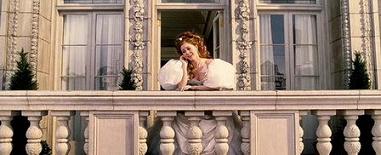
AV: The arrangement and orchestration of That’s How You Know seem to take a certain distance from Alan Menken’s traditional song style. Can you tell me about it?
DT: Well, I’m only one of the arrangers who worked on That’s How You Know. Martin Erskine really arranged that song, and also Robbie Buchanan. In the end, what you hear is a combination of the three of ours’ work, probably Martin more than anyone else. And Martin wrote the final orchestration. I just created the original tracks that the singers perform to. Then we had vocals that were final, or close to final. Then, another man was brought in whose name I don’t know but he was soon released. And then, in discussing what is to be done with this number, I suggested they call Martin who, I think, has a very fine grasp of that style. And Martin came aboard and wrote an arrangement, did a demo, got notes on it, then wrote the orchestration. But meanwhile, Robbie Buchanan had done additional rhythm writing. So, the final product would have to be described as a group effort of me and then Martin, who did more than anybody, and Robbie Buchanan.
AV: With that song, it is much harder to find references in the history of animation.
DT: I don’t think it has any real musical antecedents, too, certainly not in the animated world. I think they just went for something new and it’s such an important part of the movie, it involves so many extras that I don’t think there’s been anything like that, that’s been successful in 50 years. Newsies tried to do some stuff of that scope but it was not a really successful film and was a much, much less expensive film. There are 300 extras in this number!

So, I think that’s one of the reasons why there were three arrangers on it. They intended to do something new, that had never been done on a stage, never been tried and hasn’t even been done in film in half a century. It was such a big attempt that they really used everybody they could find to create an orchestration that made them happy.
Alan’s original demo is very different. The number is much less long. It has a much harder beat and his voice is much more masculine. So, going from a solo to a group number and from a song for a male voice to a female voice took three arrangers.
AV: What was your involvement in So Close, whose arrangement is more pop music influenced?
DT: Robbie Buchanan arranged So Close. I did finally some orchestrating for it but it was his orchestration. So Close is a very straight-ahead pop ballad of, you can say, the 80s and 90s or even contemporary.
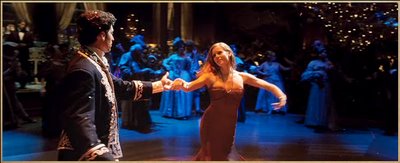
AV: And what about Ever, Ever After, sung by Carrie Underwood?
DT: None of us worked on that one. That went right to the producers and to Carrie Underwood’s people. They did a very good job. It sounds very slick.
AV: As we move forward into the film, the approach to songs seems to evolve drastically.
DT: Yes, you can see that the way that songs are used in the film becomes more contemporary. The first song, True Love’s Kiss is feature animation. Happy Working Song is live-action but in the animated style and with some actual computer animation. That’s How You Know is a big, live-action, musical number in a relatively contemporary style and sung by characters. So Close is a pop song which they’re dancing to. They pretend it’s sung by the singer at the ball, but it’s clearly a pop record with a pop orchestra playing behind it. And then, the last song is completely non-dramatic. It’s just an underscore for the epilogue of the movie. So, not only the songs evolve stylistically, but the way they’re used in the film evolves stylistically. It’s a progression of styles going back as far as the 1930s and progressing to the present. It’s an 80 year sweep and I think it was handled with great expertise.
AV: As far as score orchestration is concerned, you share credits with The New World‘s orchestrator, Kevin Kliesch. What was exactly your part on that?
DT: I did the cues for the entire animated part of the film and the live-action scenes that most closely resembled the animated scenes’ style. It was a lot of writing, though. It was plenty for me to do. And Kevin did all the romantic cues with Gisele and Robert and then he did the entire end of the movie except when Narissa reappears and gets Giselle to bite the apple. For some reasons, that scene was approached as it was animated and I did that part of the ending. And I did the court dance. Perhaps you noticed a resemblance to the Turkish March by Beethoven. The temp music was the Turkish March, so Alan had to write a Turkish March of his own and then I orchestrated that. I guess they conceived that to be my part of the movie again. Suddenly, they were in “Dannyland”! So, I did the Turkish March and then the appearance of Narissa and the poisoned apple. And then, when you see Narissa in the elevator, Kevin took over and did the end of the movie. That was a huge amount of work, that entire, loud, complicated, demanding scene with the dragon he did. And a lot of that was done in later scoring sessions. I was done with this movie at the end of May and went on to the stage show of Little Mermaid. But they had subsequent recording sessions in June and subsequent to that in July, and Kevin had to deal with those on his own. Even if the cues were more in my area, because at that point, I just had other responsibilities.
 AV: So, orchestrally speaking, how did you approach the world of Andalasia?
AV: So, orchestrally speaking, how did you approach the world of Andalasia?
DT: Unreal. It had to seem unreal. Everything a little bit exaggerated, everything a little bit campy. Everything beautiful but in a way that does not really resemble life but only resembles artifice. I had no trouble with that. It was fun!
AV: How do you represent artifice in music?
DT: That would be hard to say. It’s not something technical; it’s something emotional. It’s not so much a place in your heart. It’s something that you see. It’s visual. The music becomes very visual. So, it has a point of view but it doesn’t really have a soul yet. The correct word would be “Apollonian”. It is a fixed image in the eye and the mind’s eye, but it is not something that possesses an inner life. So, I wanted a lot of shine on everything. It always had to gleam or shine to convey the idea of a surface, a glittering surface in which light is reflected. Yes, it’s very shiny. Glossy. And Alan likes these highs. He has a fondness for the high end of the orchestra, the very high violins and all those celestas, orchestra bells, high end of the harp, all those very high-pitched sonorities. We also had a very fine recording engineer, John Richards, who got a beautiful sound out of all these instruments.
 AV: How did you treat the moment when Giselle goes from the animated world to the real world?
AV: How did you treat the moment when Giselle goes from the animated world to the real world?
DT: That was really Alan’s approach. The music got very modern for a while. I mean, Alan doesn’t usually write in the 20th-century Stravinsky-esque style. What he wrote was vastly more complicated than any human figure could play. So, I had to grasp the essence of what he was doing and then translated into something that could be played in real time. Interestingly, we had a piano player in L.A. who’s quite and unbelievable talented. His name’s Randy Kerber. We did a piano overdub to add some of the levels of complexity that I had scripted away and, as Giselle is falling, he improvised falling figures that were completely dissonant and so complicated you could never write them out or if you did write them out, nobody could be expected to read them. He did it very quickly on his own, after the orchestra had left, and it appears very prominently in the final mix. In a way, it came full circle. What Alan created was too complicated to be played. What I wrote could be played but wasn’t as dissonant and daring as they had hoped for. And then the piano played just improvised things in real time with his figures of style and we all lived happily ever after!
AV: What do the cues Alan Menken gives you look like, when you first get to orchestrate them?
DT: They’re completed piano part with maybe some drums added. They’re not orchestrated, neither the songs nor the score. When he demos a song, it’s not just a demo. It’s also what we call a pitch, which is attempt to get the approval. So, when he demos a song, it’s always presented in its most attractive light. And the most attractive light is his voice singing it. If it goes directly from him to a male singer, it’s usually pretty close to what the final version is going to be. But if it goes from Alan to a female singer, a lot more adjustments are going to have to be made.
AV: What scene did you have the most fun to orchestrate?
DT: I would say the scene with the poisoned apple at the ball.That was fun. I used dark colors for Susan Sarandon: bassoon, violas… There is an affinity between this scene and the first scene when the hag pushes Giselle into the well, and I kept thinking of wrinkles with that face. I remember that, at the recording session, there was some question on that. I wrote a bassoon solo and somebody thought that the English horn would have been better on that. But it couldn’t because the English horn has a beautiful and rich sound in that register and I wanted it to be hollow, like the old hag. I liked the speaking voice that Susan Surandon used as the old hag. She just spoke just like there was no breath in her lungs. So, I chose very wrinkled, malicious colors for both scenes with the old hag and I had a lot of fun with them.
AV: Did you talk with Kevin Kliesch?
DT: We had breakfast together. I met him at his home in Burbank. Monica Zierhut put us together. We came to sort of an agreement about how big the orchestra would be and what it would contain. And I told him certain things to be aware in Alan’s sketches. Kevin is not inexperienced. He’s 37 years old, but I let him know things like repeated notes on the left hand frequently mean that he’s just marking time. It doesn’t mean that he expects to hear repeated notes or wants to hear them in the orchestra. That could be a held note or a tremolos or many different things. But on the piano, which has no natural sustain or little natural sustain, Alan keeps repeating and I told him not to take that literally. I wished him good luck and we stayed in touch after that. There was very little time, you know. Astonishingly little. And I’m in New York and he’s in L.A. He actually had another major movie that he was working on. His plate was very full!
AV: During the score orchestration process, did you get any request to make reference to any Disney classic score in particular?
DT: No. We discussed in general terms what the frame of reference was, but no one ever asked me for a Snow White moment or a Cinderella moment. There were no specifics.
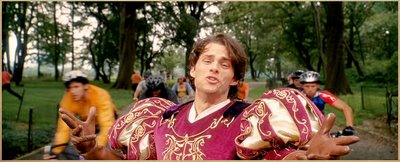
AV: After working on Enchanted, how was it to go to the Little Mermaid musical?
DT: It was a shock, Jeremie, because the movie orchestra was almost too big. It was film, but on a large size. Six French horns, three trumpets, three trombones and tuba, a very large string section, as many as two harps. And then Little Mermaid is the modern Broadway, which is very much reduced: 18 players. I mean, the traditional Broadway orchestra was 26 players. There’s a huge difference. You’re relying on synthesizers very heavily to make up the additional strings you’re missing and additional French horns. So, you go from something where you’re constantly asking yourself: “how can I make this big enough for what the orchestra is and needs to be?” With a film orchestra, your challenge is that the orchestra so big; how do you get each person enough to play and get each section of the orchestra a personality. Today, Broadway orchestra is so small that the question is: “how do we get through a big show without killing the players and without making demands that are superhuman on each person?”. So, it was a different set of challenges.
![]() [1]
[1]
With our deepest admiration to Alan Menken and all our gratitude to Kevin Lima, Floriane Mathieu and Rick Kunis.
Our deepest admiration and appreciation to Danny Troob.
- [Image]: http://www.amazon.com/exec/obidos/ASIN/B0011U52EC/animatedviews-20
Source URL: https://animatedviews.com/2008/enchanted-interviews-chapter-three-alan-menken-and-danny-troob/